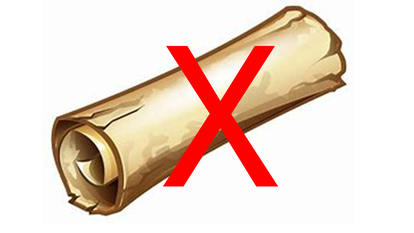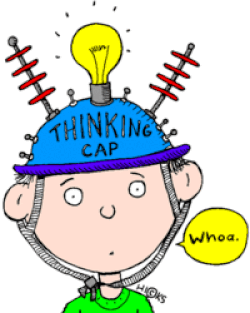 Advertising is advertising, right? You pay for an ad and they all do the same job. No. Different platforms have different purposes, which means that users use them differently. A reader may be a reader on Amazon, but on Facebook they aren’t a reader at all. While they are on Facebook they are social media users, which means their head is in a different space. That means that you have to approach advertising on different platforms in different ways. To use the big word, you have to adopt a different strategy depending on where you are advertising. Even generic terms such as “social media” aren’t that helpful, because different social media platforms require different approaches to how you use them for advertising. Let’s start with the big differences between Amazon and social media, when it comes to advertising.  If someone is on Amazon it means they are there to buy something. That means the sale is half way to being made because there is no reluctance to spend money. The main barrier you have to cross is the one that makes the reader buy your book instead of someone else’s. On social media people are there for different reasons. Some want to keep in touch with friends and family, what is happening in their local area, they are communicating with people about hobbies, memories, work etc or they are just filling in time watching funny cat videos until they decide to do something else. They aren’t there to buy anything (there is one exception to that, which I’ll cover later), That means you have a large barrier to cross before you even start to tell them about your book.  You have to get them out of their “social” mindset into a “buying” mindset. Or, at the very least, a “tell me a little bit more” mindset. That isn’t easy to do. Which means your adverts have to be pitched in a different way. To go back to the big word used earlier, you have to adopt a different strategy. So, let’s talk about Amazon advertising strategy first as it is actually the best place to advertise. Why? For the reason I gave up above. Its users already want to buy something.  Amazon is a search driven selling platform. While Amazon may suggest things for people to buy, based on their previous purchases (Amazon is still trying to sell me Lego based on a single purchase made 5 years ago) most users have some idea what they want to buy and they go looking for it, using Amazon’s search bar. They may have a very specific idea of what they want, such as “romance involving pirates and buried treasure”, but some have less specific needs and input single or double search words such as “fantasy” or “cozy mystery”. They may even be looking for books by a favourite author, so they just enter their name in the search bar. Which means you have to adopt a strategy that allows the readers to find your books based on searches such as that. And when it comes to author name searches, just because they are looking for the latest Lee Childs book, it doesn't mean they won't buy your book at the same time if you can catch their eye. There are three parts of your book’s description that you can use to help readers to find it. The subtitle, the blurb and the 7 keywords that you put in the book’s metadata* (if you publish using KDP). Using the right words for the genre of book helps your book to show up when you run what Amazon calls an “automated category ad”.  That is the simplest form of ad to set up on Amazon, as they do most of the work for you. But it is also the least efficient because it relies on you and your readers thinking the same way and your readers selecting the keywords that you thought of when you set up your metadata (which probably didn't include author names) A more targeted strategy is to set up ads that use lots of keywords, so that you go beyond the 7 that KDP allows you (you may not even use KDP as your publishing platform). This is where tools such as Publisher Rocket come in handy, because that analyses Amazon’s sales data to see what search words were used to sell a book. So, if your book is similar, you can use the same keywords so that searches show your books to readers in the search results. But even if you don’t have Publisher Rocket, you can still generate lists of keywords because a lot of them are author names and their book titles. You can generate random search terms and see which ones produce results for books similar to yours. You can also search for books like yours and use the names of the authors and their titles as keywords in your ads. FYI, incognito browsing is best for this so that you aren’t shown books like the ones you usually read. You should be looking for about 150 -200 keywords for each ad you run.  Now to social media strategy. You can use keywords for that too – they call them hashtags – but the first barrier you have to cross is shifting people from their “social” mindset to “reader and buyer” mindset, which is no simple trick. We are so used to ignoring ads on social media nowadays that unless we see something really eye catching we just scroll past it. We posted a blog a couple of weeks back which was about “stopping the scroll” (see our archive for April 2024) and that is what we are talking about here. But different social media platforms attract different audiences, and those audiences are looking for different things, That means that the advertiser has to adopt different strategies on different platforms if they want to stop the scroll. If you want to advertise to younger readers you need to be on TikTok and that is very much a music and video based platform. If you can combine the two effectively then you have a chance that your ad will be seen,  But it is also a platform where people talk, so a talking video advert could work too. People like to see other real people on TikTok so if you are a person and you put yourself in front of the camera and start talking, you are probably going to be seen. Obviously, that isn’t going to suit everyone. Some people run away screaming when a camera is pointed at them. If that is you then fine, but it doesn’t mean you can’t use TikTok. You just have to use your creativity in a way that allows you to get your message across in a visually appealing way without you having to show your face on camera. Instagram and Pinterest go together in some ways, as they both rely heavily on images, but just putting an image of your book cover on them isn’t the best idea. The image has to be more than that. It has to stop people in their tracks and get them to say “Wow, I wonder what that is about?”. The image doesn’t even have to feature your book cover. It just has to appeal to people who like reading your genre of books.  Pinterest is a particularly good place to advertise because about 50% of users do go on it looking for ideas for things to buy, which is way more than any of the other social media platforms. It is also a good place to go if you are targeting women readers because they use it for buying more than men. X (Twitter as was) is a bit of a bear garden and I’m not sure it even counts as “social media” anymore as many of the people who use it are far from sociable. But it must sell stuff or businesses wouldn’t use it for advertising. We don’t use it for that, because we aren’t sure that it’s the right advertising channel for us. We do, however, use it as a social media platform and we promote our books on it, but we don’t pay for advertising. Finally ,we have Facebook. We use Facebook for advertising almost as much as we use Amazon Ads and it does work, once you have developed the right advertising strategy.  Research has shown that it is the image that stops the scroll. Then the user reads the headline (the words immediately under the image) and then they read the primary text (the main body of the ad). So, you have to “stop the scroll” with the image, hook the reader with the headline and then sell them the book with the primary text. If they like what they have read, they’ll click the link. They may not click the link just because they like the image, so the three things have to work together. That gives you 3 variables and you may have to try different combinations to find the one that is a winner. Without that Facebook will end up spending a lot of your money and you won’t get much in return. If you want to use your book’s blurb as the primary text, you may need to develop different versions of it to appeal to different readers.  The lack of research into what readers find appealing may be why some authors find it difficult to get Facebook Ads to work for them, because they try just one combination of image, headline and primary text and when it doesn’t sell them any books, they give up. We have proven this for ourselves, using 3 different images but with the same headline and primary text. One image always shows up as being more effective than the other two. We then reduce the spend on the less effective ads and increase it on the more effective one. Facebook even has technology (called Digital Creative Testing (DCT)) to help you find combinations that work. You can upload several different images, several different headlines and several different primary texts and Facebook will run ads using the various combinations. You then analyse the results and decide which ones are winners and which are costing you more than they make back.  Finally, you have the book promotion sites (Bookbub, BooksGoSocial, WrittenWordMedia et al) which, for a price, will send out promos for your books to their social media followers and email lists. They have rules of their own about what you can and can’t do when using them and they vary too much for us to cover them here. But the same basic idea of developing a strategy that suits the platform applies to them, in just the same way as it applies to Amazon and to social media. So, our key message for this blog is to think about where you are going to advertise, think about why people are using that platform, then develop a strategy that will appeal to that sort of user. Don’t just assume that an ad is just an ad, because it isn’t. * Metadata in book publishing terms means the combination of book title, subtitle, genre, blurb and any keywords you are able to enter. They are critical when you are trying to get your book to show up in search results. If you have enjoyed this blog, or found it informative, then make sure you don’t miss future editions. Just click on the button below to sign up for our newsletter. We’ll even send you a free ebook for doing so.
0 Comments
Leave a Reply. |
AuthorThis blog is compiled and curated by the Selfishgenie publishing team. Archives
June 2025
|
 RSS Feed
RSS Feed